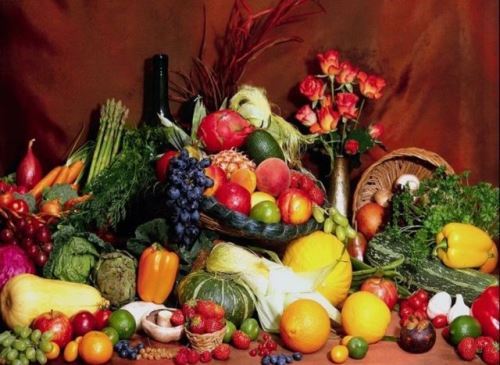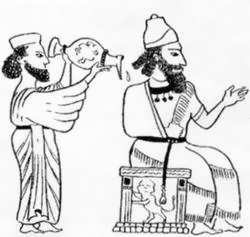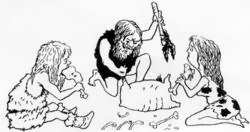Useless facts from the history of feasts

The rich ancient Egyptians liked parties and good food. They often wore cones of perfumed wax on their heads. The wax melted during the dinner and ran down in streams, cooling their faces.
In ancient Greece and Rome, guests at a banquet wore wreaths of plaited flowers and leaves. They believed these would prevent drunkenness.
 Romans liked to invite odd numbers of guests. They believed that even numbers meant conflict. Nowadays, in Western countries an even number of men and women are preferred — to help the flow of conversation.
Romans liked to invite odd numbers of guests. They believed that even numbers meant conflict. Nowadays, in Western countries an even number of men and women are preferred — to help the flow of conversation.
In the ancient Middle East, a host would pour perfumed oil over the heads of his guests. This was to mark their passage from the ‘dirty’ outside to the ‘pure’ inside.

In early northern Europe, feasts were male affairs and the men got very drunk. Among the ancient Celts the thigh bones of a bird were reserved for the most important guests. Men would fight to the death over thigh bones.
It was once traditional for a male guest to be given an envelope containing the name of a lady he was to accompany to the table. The couple would then walk to the table together.
If a guest failed to turn up at a party in 19th-century Paris, a professional guest could be hired to take his place.
Modern dining forks were invented in Italy. They were brought to Europe in the 17th century by Thomas Coryat. When Coryat showed the fork to his friends, they laughed at the new invention. They said that the Italians were very strange people because the fork was very inconvenient. Only 50 years later did the people in England begin to use forks.

Fingers are very useful for handling food, but they are blunt and they get sticky and dirty. Knives were the first pieces of cutlery to be used. The first crude stone knives were made perhaps three million years ago. Some Stone Age wooden forks may date from as long ago as 7000 BC.

The first chopsticks appeared in China during the Shang dynasty (1600-1028 BC). They were considered superior to knives because they were used by scholars. Scholars were more highly thought of than warriors who carried knives.
from: Speak out 1999/6
Бесполезные факты из истории праздников
Богатые древние египтяне любили вечеринки и хорошую еду. Они часто носили конусы из душистого воска на головах. Воск плавился во время ужина и сбегал вниз, охлаждая их лица.
В Древней Греции и Риме, гости на банкете носили венки из сплетенных цветов и листьев. Они верили, что это предотвратит опьянение.
Римляне любили приглашать нечетное количество гостей. Они считали, что четные числа означали конфликт. В настоящее время, в западных странах четное число мужчин и женщин является предпочтительным, для того чтобы помочь поддержать разговор.
В древнем Ближнем Востоке, хозяин лил благовония над головами своих гостей. Это делалось для того, чтобы оградить «грязную» улицу от «чистого» дома.
Раньше в Северной Европе, праздники были преимущественно для мужчин, где они сильно напивались. Среди древних кельтов бедренные кости птицы были зарезервированы для самых важных гостей. Мужчины дрались до смерти за эти кости.
Это было традиционно для гостя мужчины получить конверт, содержащий имя леди, которую он должен был сопровождать к столу. Затем пара шла к столу вместе.
Если гость не явился на вечеринку в 19-ом веке в Париже, нанимали профессионального гостя, который занимал его место.
Обеденные вилки были изобретены в Италии. Они были доставлены в Европу в 17 веке Томасом Кориэтом. Когда Кориэт показал вилку к своим друзьям, они смеялись над новым изобретением. Они сказали, что итальянцы были очень странные люди, потому что вилка очень неудобна. Только 50 лет спустя люди в Англии начали использовать вилки.
Пальцы очень полезны для разделывания пищи, но они тупые, и становятся липкими и грязными. Первыми столовыми приборами стали ножи. Первые каменные ножи были сделаны, вероятно, три миллиона лет назад. Некоторые деревянные вилки каменного века могут датироваться еще в 7000 до н.э.
Первые палочки для еды появились в Китае во время династии Шан (1600-1028 до н.э.). Считалось, что они превосходят ножи, потому что использовались учеными. Ученых ценили выше, чем воинов, которые пользовались ножами.